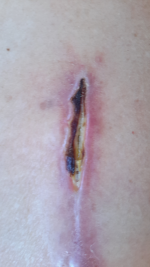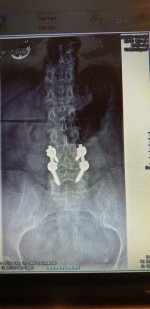makes me wonder if you have some kind of immune suppression going on
Besides Herpes at age 5, Polio at 6. I have had psoriasis since the age of 11 (3rd generation Psoriasis). shingles in 2005, Lupus, permanent low cortisol diagnosed in 2007, and elevated phytanic acid (
VLCFA) test positive in 2018.
I think that counts for, immune compromise.
However, I´m still alive in spite of ME/CFS, APS, VWF, Covid in Jan 2020, RSV in Nov. 2022 and all other medical problems (7 Tarlov cysts, stenosis and spondylitis).
There is one more genetic marker, I have also blood tested for celiac disease.
In my lab results you may have seen Folsäure (Folic acid) 3.5- is way too low.
This should be for many ME/CSF patients a warning sign.
"A deficiency in B12 or folate may take months or years to become evident, and
may lead to symptoms such as fatigue, muscle weakness, diarrhea, difficulty concentrating, forgetfulness, sleeplessness, irritability, and mood swings."
"Vitamin B12 or B9 (commonly called folate) deficiency anaemia
occurs when a lack of vitamin B12 or folate causes the body to produce abnormally large red blood cells that can't function properly. Red blood cells carry oxygen around the body using a substance called haemoglobin."
Does folic acid make you tired?
"Yes, folic acid will make you sleepy. Folic acid supplementation helps an individual to get vitamin B9 in the body. Vitamin B is associated with insomnia. Supplementation of vitamin B will help patients to attain a good quality of sleep."
I wish you will be successful in fighting Bartonellosis.


